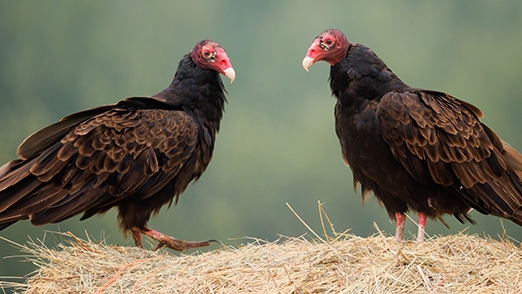Learning About the Vultures of Florida
Vultures of Florida: An In-Depth Look
Vultures are large birds of prey that are known for their scavenging behavior, feeding on the remains of dead animals. Florida is home to several species of vultures, including the turkey vulture, the black vulture, and the less common king vulture. In this article, we will explore the unique characteristics, behaviors, and conservation efforts related to these fascinating birds.
Species of Vultures in Florida
The most common vulture species in Florida is the turkey vulture (Cathartes aura). This bird has a bare head and neck that is bright red in color, and it has a distinctive flight pattern with long, shallow wingbeats. It is a large bird, with a wingspan up to 6 feet, and can often be seen perched on telephone poles, rooftops, and other high places.
This bird has a bare head and neck that is bright red in color, and it has a distinctive flight pattern with long, shallow wingbeats. It is a large bird, with a wingspan up to 6 feet, and can often be seen perched on telephone poles, rooftops, and other high places.
Another species of vulture found in Florida is the black vulture (Coragyps atratus).  This bird is smaller than the turkey vulture, with a wingspan of around 5 feet, and it has a shorter tail and more robust body. The black vulture has a black head and neck, and a dark gray body. It is also known for its distinctive call, which is a high-pitched whistle.
This bird is smaller than the turkey vulture, with a wingspan of around 5 feet, and it has a shorter tail and more robust body. The black vulture has a black head and neck, and a dark gray body. It is also known for its distinctive call, which is a high-pitched whistle.
The third species of vulture found in Florida, although more uncommon than the others, is the king vulture (Sarcoramphus papa). This is a very striking bird with a colorful head that can range from orange to red, blue, and yellow. It has a wingspan of around 6 feet, and its body is white with black and gray feathers. These birds are exceptionally rare and are only found in certain areas of the state.
This is a very striking bird with a colorful head that can range from orange to red, blue, and yellow. It has a wingspan of around 6 feet, and its body is white with black and gray feathers. These birds are exceptionally rare and are only found in certain areas of the state.
Behavior and Diet
Vultures are opportunistic feeders and are known for their scavenging behavior. They feed on a wide range of animals, including mammals, birds, and reptiles. When vultures find a carcass, they will land nearby and circle the area, waiting for other birds to join them. Once a group of vultures has gathered, they will begin feeding on the carcass, tearing apart the flesh with their sharp beaks.
Both turkey and black vultures are social birds and will often roost, feed, and travel together in large groups. They can often be seen spiraling in the air, taking advantage of thermals, and using their keen sense of smell to locate food. Vultures have an incredible sense of smell, and can detect the scent of a dead animal from miles away.
Conservation Efforts
All three species of vultures found in Florida are protected under the Migratory Bird Treaty Act, which makes it illegal to hunt, capture, or kill them. Despite this protection, vultures still face numerous threats, including habitat loss, poisoning, electrocution from power lines, and collisions with vehicles.
In recent years, Florida has launched several conservation programs aimed at protecting vultures and their habitats. These programs include monitoring vulture populations, providing nesting and roosting sites, and educating the public about the importance of these birds in the ecosystem.
Conclusion
Vultures are an important part of Florida’s natural environment, serving as vital scavengers that help keep the ecosystem healthy. While some people may view vultures as unattractive or even repulsive, they play a critical role in the food chain and are a key indicator of the overall health of the environment. By protecting vultures and their habitats, we can ensure that these fascinating birds continue to thrive for generations to come.
